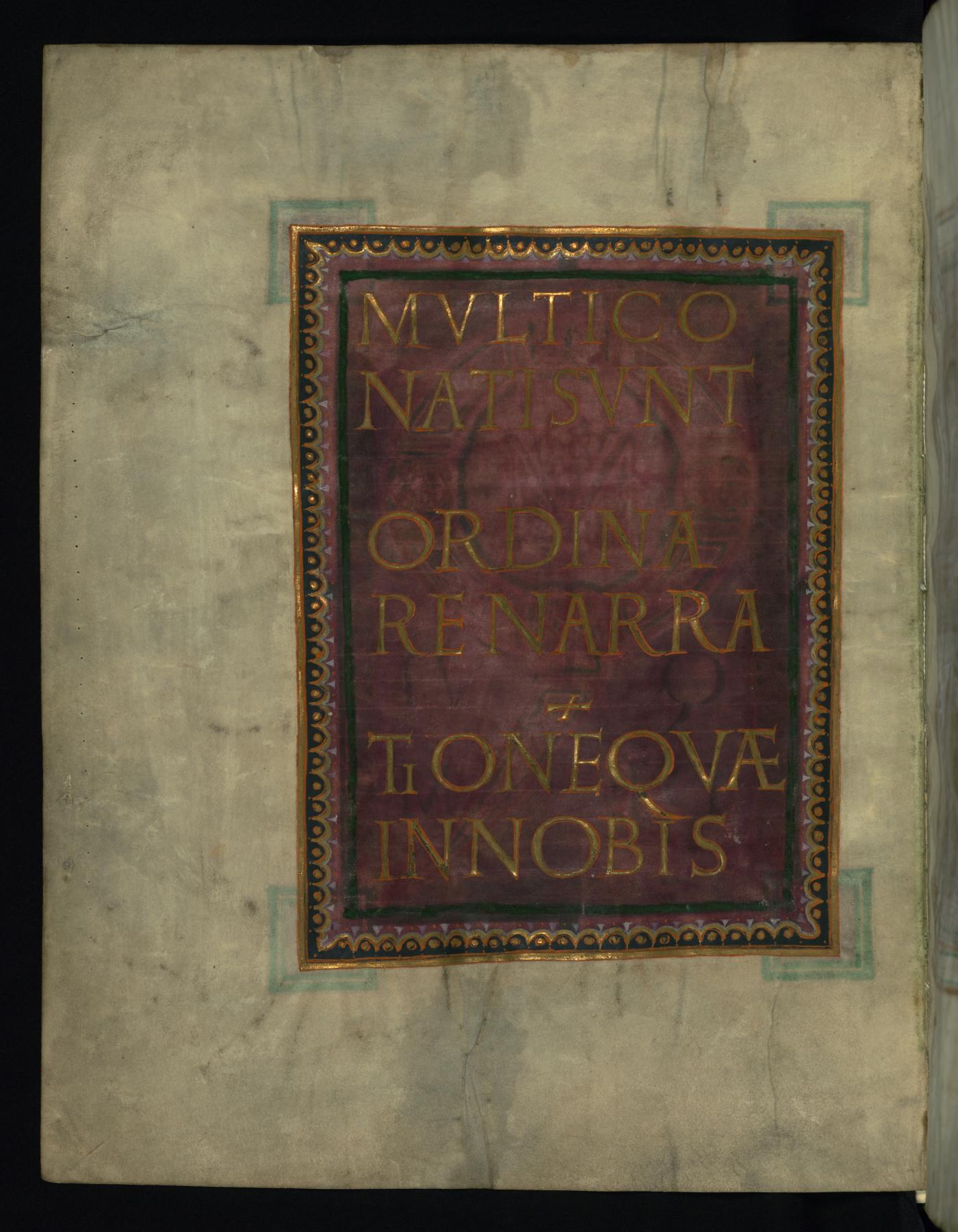Decorated Text Page
(Manuscripts and Rare Books)
The study of classical texts continued to influence the production of manuscripts during the reign of Charlemagne's heirs and successors. In a mid-tenth-century gospel book probably produced at Corvey in Germany, the beginning of the Gospel of Luke is laid out with large, beautiful capitals modeled on the square capitals in Roman epigraphy. The angular letters are a clear departure from the rounder capitals common during that period and are a conscious imitation of Roman grandeur.
As in Roman epigraphy, the words on this page are written continuously without breaks or punctuation.
Inscription
Provenance
Provenance (from the French provenir, 'to come from/forth') is the chronology of the ownership, custody, or location of a historical object. Learn more about provenance at the Walters.
Written in the Monastery of Corvey on the Weser River in Germany ca. 940-975, during the reign of Otto I [based on style and paleography]; [Originally part of a Gospel Book belonging to the Chapter Library of the Cathedral of Rheims until the French Revolution, now Ms. 10 in the Rheims Municipal Library]; Sir Thomas Phillips, London, ca. 1855 [mode of acquisition unknown] [Ms. 14122, noted on bottom of fol. 1r]; A. Chester Beatty, December 1920, acquired privately from Phillips collection; Walters Art Museum, October 1952, by purchase [from Mrs. Chester Beatty through Maggs Brothers].
Geographies
Germany, Corvey (Place of Origin)
Measurements
H: 12 5/16 x W: 9 1/2 in. (31.2 x 24.2 cm)
Credit Line
Museum purchase, 1952
Location in Museum
Not on view
Accession Number
In libraries, galleries, museums, and archives, an accession number is a unique identifier assigned to each object in the collection.
In libraries, galleries, museums, and archives, an accession number is a unique identifier assigned to each object in the collection.
W.751.2V



